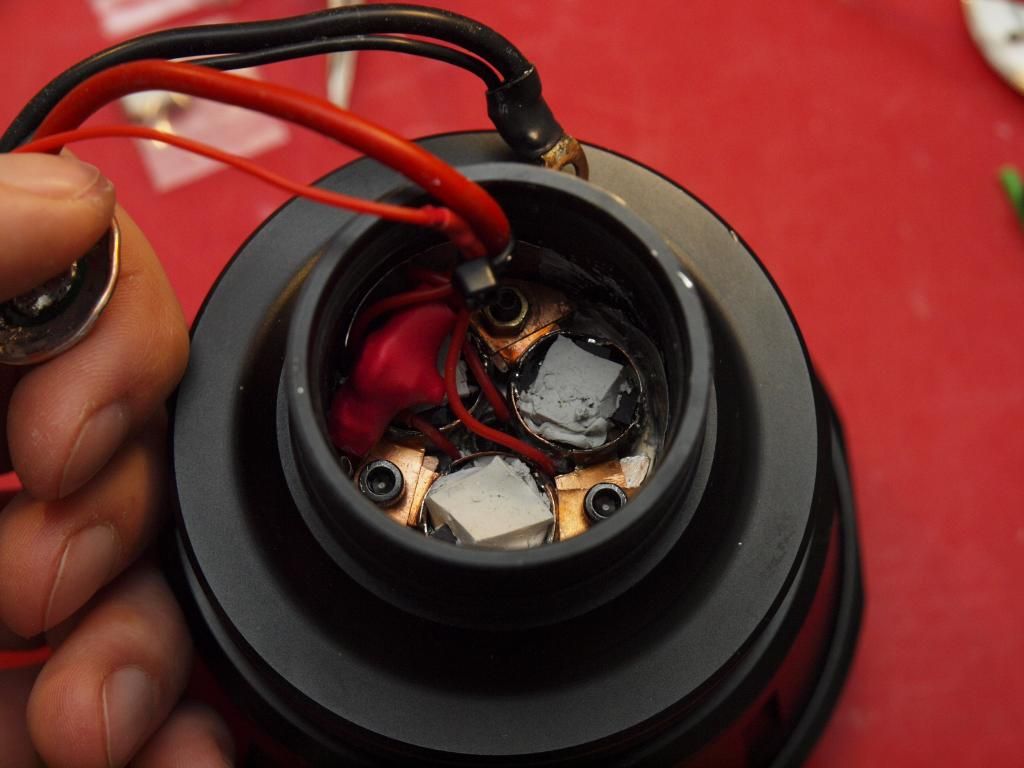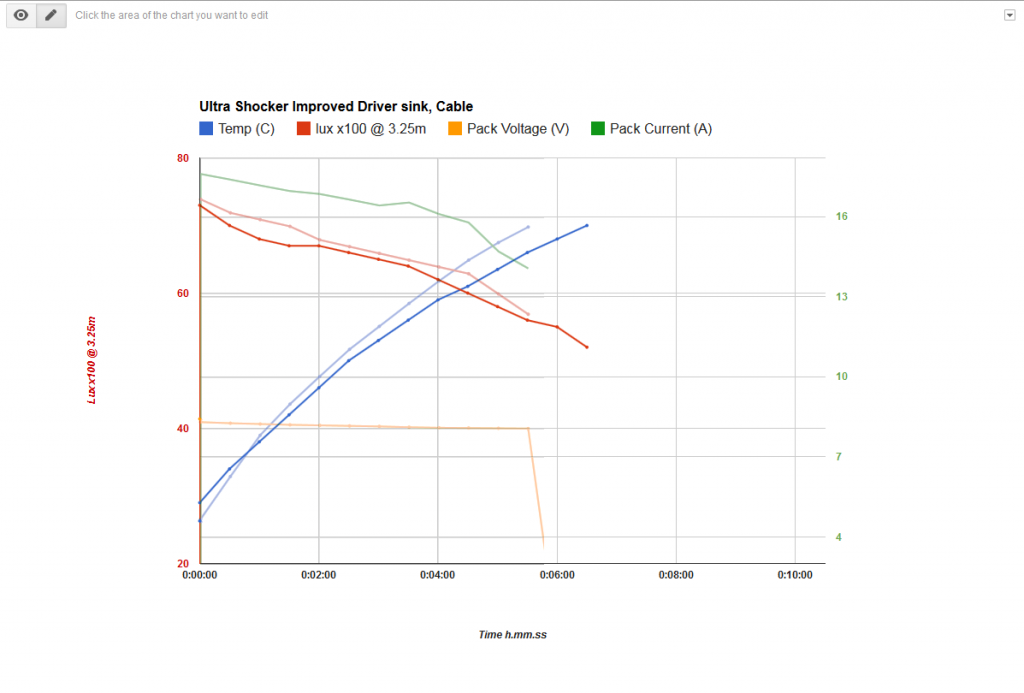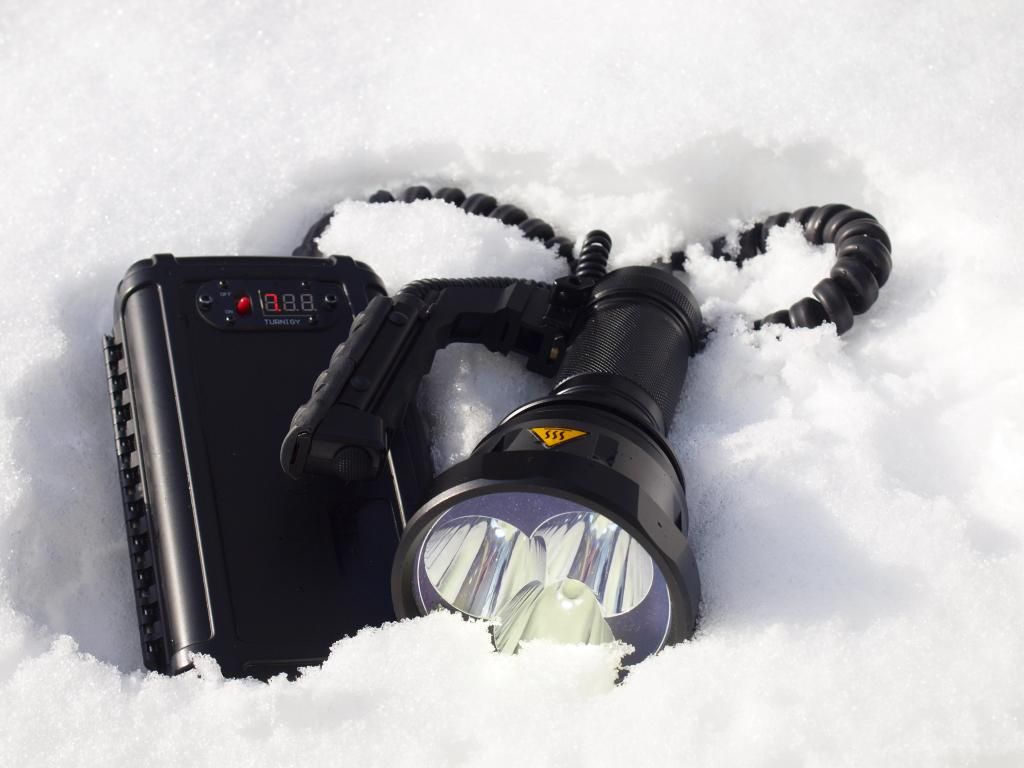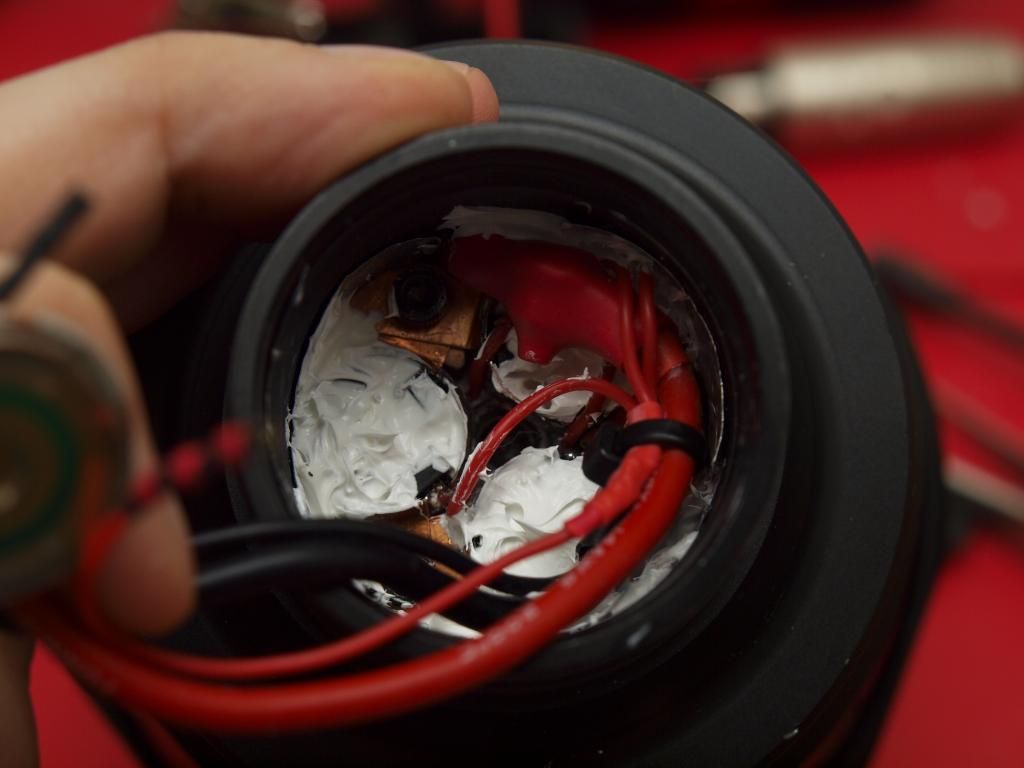I do like the potential or these new integrated water cooling solutions don’t see a way of making it work here though. Maybe someone else can build/modify a light around something like that, be cool to see.
i always ” shoooh! ” my thoughts away when a liquid cooled Light comes into my mind.
(un)fortunately i don´t have access to a lathe and a mill…
I just caught up on this after a few months…WOW!
Yeah it’s not gonna happen here, best thing I can try is something like that concept with a blower a form of duct that directs the airflow around and over as much of the limited fin area as possible. Think it could work and I have a couple of those fans on order to give it a go.
Fan noise is pretty lame though, so not sure how much use something like this would actually get, if nothing else it would at least look cool and act as an anti roll aid. Can’t have this thing flopped on it’s side or sitting on it’s face and hiding those lovely emitters when it’s sitting on the shelf now can we. ![]()
DIWdivers 13.5 amp linear driver may be of interest to you. It is fully dimmable via potentiometer. There are also 10, 8, and 5 amp variants.
Very clean mod btw. I like it. :party:
Thanks, I didn’t know about that option.
Tbh I like having a standard clicky ui on a light like this (with all the nice firmware options that this hacked up 7135 driver offers), but there’s something to be said for a nice clunky multi position pot switch or dimmer combined with a driver like that. Bit more old school.
Tempted to find a use for it somewhere now. I’m also fond of the predictability of linear drivers, every time I play around with switching boost or buck drivers something usually ends up smoking…haha ![]()
Well I asked Ric about his BTU shocker stock and apart from a few battery carriers and switch boots he’s completely cleaned out. Until I asked him the BTU kit (no driver) was still on the webpage, looked like it was still in stock and available for a good price, now that’s gone too.
Looks like this is the end of the shocker. ![]()
I did ask about another possible production run but he didn’t get back to me on that yet.
lol - don’t hold your breath.
Don’t give up mate! PM Vinh on the other forum, he has rooms of spare parts! Perhaps slight exaggeration!
Alright, hope everyone had a good break over the holidays!
Still no beamshots I’m afraid, we have half a meter of snow outside so those will have to wait a bit.
-
I’ve got some new super exciting runtime graphs though! Yay! ![]()
![]()
I had a go at maximizing the heatsink stuff inside the driver cavity and then ran the same setup as the last test to see if I could see any difference in the output behaviour.
All I really did was wedge some bits of thin aluminium sheet in between the driver assembly and the cavity wall, press some TEM cubes into the middle of the 7135 slaves (just to try and homogonize the temperature within all those 7135s) and apply a bit of thermal paste where needed.
I also touched up a solder joint on one chip that looked suspect and could potentially have caused a flicker on one particular emitter. That was something slightly annoying I noticed each time the light was warming up. I probably didn’t solder one 7135 ground tab perfectly with the copper sink rings causing it to heat up faster than all the others.
Not sure yet if that has been fixed but I definitely hope so.

It’s a mess in there and I wasn’t too hopeful that it would actually do all that much but the test results are pretty significant!

( Faded graph is old comparison test done before the heatsink improvements, solid is the new test. )
Everything was set up the exact same way as the first test except that the starting temperature of the light was around 4 degrees C cooler.
So I’m very pleased with these improvements. It’s really obvious that the light is now able to maintain considerably higher output for longer, the steeper part of the output curve now starts at 4.5mins rather than at 2. Temperature on the outside of the light also gets considerably higher and continues on towards 70 degrees, at around the 5.5 minute mark I saw a larger flicker in the output and decided to call it a day at that point! Haha, made me jump a bit tbh! ![]()
I suspect that was caused by one entire driver puck getting too hot and calling it quits, didn’t investigate which one because I wasn’t too happy running the light at that kind of temperature.
Next I’ll do a test with the battery pack cable again and see what real world performance looks like now.
Seeing how much better things are running now, I may well go back in and pot the entire driver assembly.
Cheers
Linus
You gotta love that temp line. 
Haha there’s no stopping that bugger! If I keep tweaking I might just get it vertical! ![]()
But to be fair I’m loving the waft of nicely heated air rising up to my hand on the comfy cool handle! Only need to bring one glove out in the snow. 8)
Edit: Dammit, the flicker is still there. Number 1. driver/emitter (top center) is the culprit, my re soldering didn’t do the trick. Really hope I don’t have to take everything apart again…urgh…
I’m really starting to hate these 7135s! ![]()
Test done with fully assembled light, (no current measurements for sake of seeing real world output performance)

…too tired to really figure out what’s going on but I’m a bit surprised. Is driver heat STILL the dominating factor dropping performance or does pack voltage now come more into play?
You can see the two output lines are perfectly parallel for a small section of the test, the cable setup a bit lower output (are we seeing the 0.6v cable losses?) but not much resembling a regulation phase before that. Just a bigger collapse in output over the first 1.5minutes.
Aha! Think I’m onto something here, environmental cooling system! Bet you wish you had this type of thing down in Aus ey MRsDNF? ![]()

Not the most portable system but very effective! 8)
The driver issues have driven him insane! J)
Certainly seems that way, I must have truly gone insane to drown my entire driver assembly in fujik!
…what have I done…. seriously hope it helps! ![]()

It looks like the worst kind of chinese assembly line practices in there! ![]()
I just got back up to speed on this (I was ~79 posts behind…). Lots of impressive work. The new driver stacks look great, big improvement. >16W through those 7135’s sure is tearing stuff up. Your graphs are great and informative.
Don’t forget the risk of an accidental hot dedome.
It’s best to solder an extra pair of wires onto the emitter MCPCB and bring them off to a test point on the side. I’m not saying I always do this (I do not always do this.) but it’s much safer for both the operator and the $20 LED.
Don’t hate me<ducks>, but I’d better suggest the standard troubleshooting step: swap emitters between two driver sections. Flickering at high currents could be caused by damaged bonds in the emitter itself.
Hmm, good point I hadn’t thought of that.
I have some heavy welding glass, maybe I can watch the emitter closely while it happens to make sure there aren’t specific sections of the array going offline. It certainly seemed like behavior I’ve come to expect from a single 7135 chip going toasty but I’ll investigate.
It’s not a tragic problem, not really noticeable during normal operation but still a little annoying if I can’t get rid of it. The emitter isn’t losing a lot of output, it’s really just a small drop in brightness that starts with a twitch or flicker and then seems to stay at the lower level from then on. My power meter isn’t quite granular enough in it’s current reading to show exactly by how much the current drops during the flicker but gut feeling is I’m losing about 0.380ma of brightness… ![]()
Similar stuff happens later at a much greater extent when the other drivers reach critical temperatures.
-
First I’m hopeful that my fujik drench did something to help the situation, if not I’ll have to see further. Frankly I’d be much happier to find a dodgy emitter at this stage than the thought of having to dig out and disassemble the whole driver assembly! |( :_(
Now that you mention welding glass that stirs my memory. IIRC another BLF member had a failing MT-G2 they viewed under welding glass. Probably DBCstm. Ah yes, here we are:
Damn that’s crazy, I didn’t know they did that. Never had an emitter fail on me before so I didn’t even consider it.
I’m really curious now to take a look at the emitter at full power to see what’s going on there.
I did have to reflow one of these emitters back when I got them, but checking back on photos there’s no correlation to the troublesome emitter.
I wonder if this might also explain some of the strange current draws I’m seeing, never quite getting up to where I expect them to be even with what I consider plenty of voltage overhead. Maybe the 7135s aren’t completely to blame after all, we’ll see if they can redeem themselves. ![]()
Cheers for the heads up!
Linus